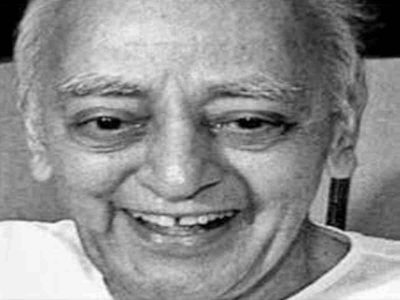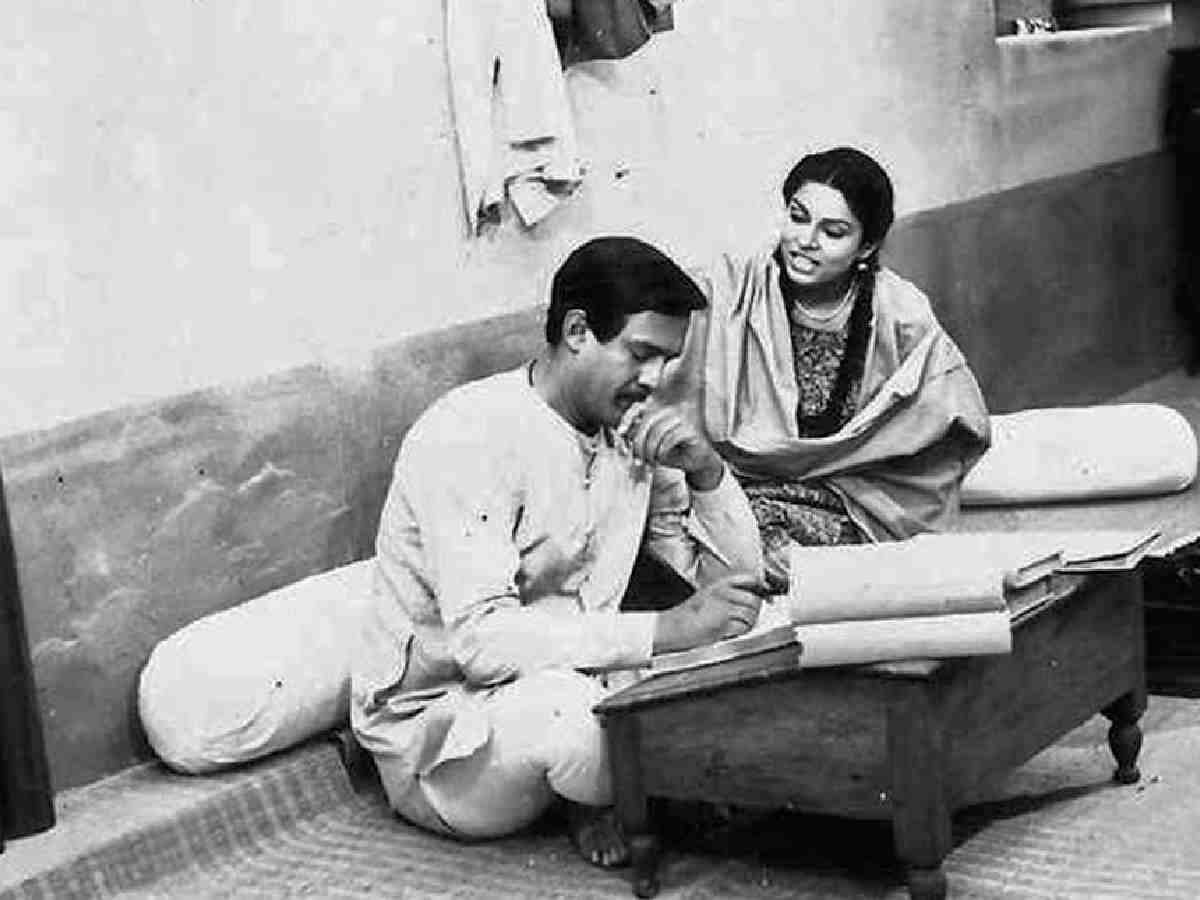Delhi: As you move from the bustling Central Market to Amar Colony in Lajpat Nagar, you are most likely to come across SS Khalsa School (Chakwal), Lahore Watch Company, Jhule Lal Sindhi Mandir among other landmarks.
All these names have one thing in common. They have links across the Radcliffe Line. Anyone who knows even a bit of Lajpat Nagar would tell you that though it has changed over the years and decades, it retains the character of a refugee colony that gave iconic characters to eminent author and editor Manohar Shayam Joshi when he was writing path-breaking serial Buniyaad.
Aired in 1987, the story of Buniyaad revolves around a Punjabi family uprooted from Lahore due to partition of the country in 1947.
Also read: Rajkumar Rao and I hardly spoke off camera: Gulshan Devaiah
As Joshi lived in Srinivaspuri, so close to Lajpat Nagar, for a very long period of time, he started observing life, idioms, language and habits of refugees very closely.
“Joshi would frequently visit Lajpat Nagar to meet Sushil Kalra, his colleague at Saptahik Hindustan (the defunct magazine of Hindustan Times group). During those visits and meetings with Kalra, he also met many refugee families and understood their struggles in an alien city,” says Prabhat Ranjan, who teaches at Delhi University and is researching on the works of Joshi.
Joshi, the life and soul behind popular serials like Hum Log and Buniyaad, came to Delhi in 1951 and lived in different parts of the city, his writing deeply influenced by the society and environment he witnessed.
His early short story, Uska Bistar, is about the lives of people living in government colonies in Delhi. His first novel, Kissa Paune Chaar Yaar, is also set in that location. That was his first tryst with Punjabi characters. Unfortunately, it remained unfinished. The characters in Buniyaad, which narrates the aftermath of the gory Partition, are all born from his experiences in Lajpat Nagar and to some extent, Srinivaspuri.
For Joshi, a Kumaoni born in Ajmer, the trauma of partition of the country was almost unknown till he started living in south Delhi. Ranjan says that he found a new world in south Delhi which had a huge concentration of refugees. And when an offer came to him to work on a serial like Buniyaad, he was ready to do justice with the subject.
“Even before Buniyaad, he gave the idea of writing a novel based on Alex Haley’s ‘Roots’ to writer and cartoonist Kalra. Kalra, a victim of partition himself, lived in Lajpat Nagar. This later led to the creation of Buniyaad, which, like ‘Roots’, is an epic saga. The research for Buniyaad was done by Pushpesh ” says Ranjan, who along with his friends of literary website Jankipul organised a function on the eve of Joshi’s birth anniversary on August 8 at the India International Centre annexe.
Also read: Bollywood: Tahira is an amazing film director, a perfectionist, says Divya Dutta
“We were simply amazed to see the characters and the language in which they converse in Buniyaad. It was a mind-boggling experience. As someone who was born and raised in Lajpat Nagar-4, we used to marvel over the perfect script of Buniyaad. Joshi had created characters like Haveli Ram, Veerawali, Ralyaram, Labhayaram and Shanno. Surely, anyone with an iota of connection with Partition would still identify with these characters,” says Sujata Sharma, a teacher and career counsellor.
Buniyaad was aired on Doordarshan in 1987 and even after so many years, you can find characters of Joshi’s magnum opus Buniyaad moving around in Lajpat Nagar and in other refugee colonies.
They talk like Haveli Ram, Veerawali, Ralyaram and Shanno. The vagaries of time have changed the character of various refugee colonies of the Capital, yet the second and third generation of refugees still become emotional when they talk about hardships their elders had faced due to Partition.
The Buniyaad story begins during the dark hours of Partition, just before independence. In those uncertain times, people on both sides believed that Partition was just an alteration of the borders and they would continue to live the way they did.
No one thought that they would leave their homes one night, never to return. The symbol of that unwillingness to accept the rot in public life was Haveliram (Alok Nath), who lived in Lahore with his wife Lajo (Anita Kanwar), his sons Bhushan (Dalip Tahil), Roshan (Mazhar Khan), Satbir (Kanwaljit Singh) and daughter in-law Lochan (Soni Razdan). The Buniyaad story spans across several decades before Joshi ends it in the early 1980s.
From Chandni Chowk to Bollywood: Gulshan Nanda’s path to glory

It’s been a while since Moti Cinema in Chandni Chowk shut down, but the charm of the place remains as it was in the past, and hasn’t diminished one bit.
There used to be an optician’s shop, ‘New Delhi Opticals’, near Moti. That too has shut down. Celebrated novelist Gulshan Nanda used to work there in the 1950s. He must have dreamt of writing a story for the movies, looking at the film posters pasted in and around Moti. Back then, he was yet to make his mark as a writer.
Nanda was interested in reading and writing but he didn’t have the courage to quit his job and fully devote himself to the world of writing. He wanted to earn a living by writing. The money he got from the optician’s shop wasn’t enough to make ends meet. There was no zeal in life. He couldn’t follow his heart.
Then one day something happened that changed his life. Nanda was travelling in a DTU bus (now DTC). During the journey, he struck a conversation with a fellow passenger and shared his woes with him. After listening patiently to Nanda, the fellow passenger told him that he should start writing and if he has it in him, his writing will be published and will receive the love of the readers. Nanda felt as if he has been given a fresh life. After that, he knocked at the doors of the world of pulp fiction. In those days, old Delhi used to be home to offices of popular Hindi publishers.
He started writing after quitting his job. What happened after that is known to all. Nobody had ever imagined that he would take the world of pocketbooks to such heights in the 1960s and 1970s.
When his novels started doing well, he moved to Mumbai (then Bombay).
Hindi novelist Prabhat Ranjan, who teaches at Delhi University’s Zakir Hussain College, recalls that publishers used to travel from Delhi to Mumbai, carrying bundles of money in attaché cases as royalty for him.
Nanda not only ventured into screenwriting in Mumbai, but is also remembered as the writer of stories of more than two dozen successful films.
As screenwriter, he was nominated for the ‘Best Story’ category at the Filmfare Awards several times. He was first nominated in this category for the film Kajal in 1966. Then, he was nominated for Neel Kamal in 1969, Khilona in 1971, Kati Patang and Naya Zamana in 1972.
Nanda had bought a house in Vikram Vihar, Lajpat Nagar in the 1960s. It was a two-storey house with each floor having two rooms. But neither he nor his family ever lived there. It was always rented out. He had also lived in Anand Parbat.
People of Vikram Vihar knew that the owner of this house was a man whose novels had millions of fans. They say that he bought this house to live in, but he left Delhi after he got some great offers from the film industry. He became successful in Mumbai and fell in love with the city. He settled there and died there. But he hasn’t been forgotten by the people of Lajpat Nagar.
The writer is a Delhi-based senior journalist and author of two books ‘Gandhi’s Delhi: April 12, 1915-January 30, 1948 and Beyond’ and ‘Dilli Ka Pehla Pyar – Connaught Place





